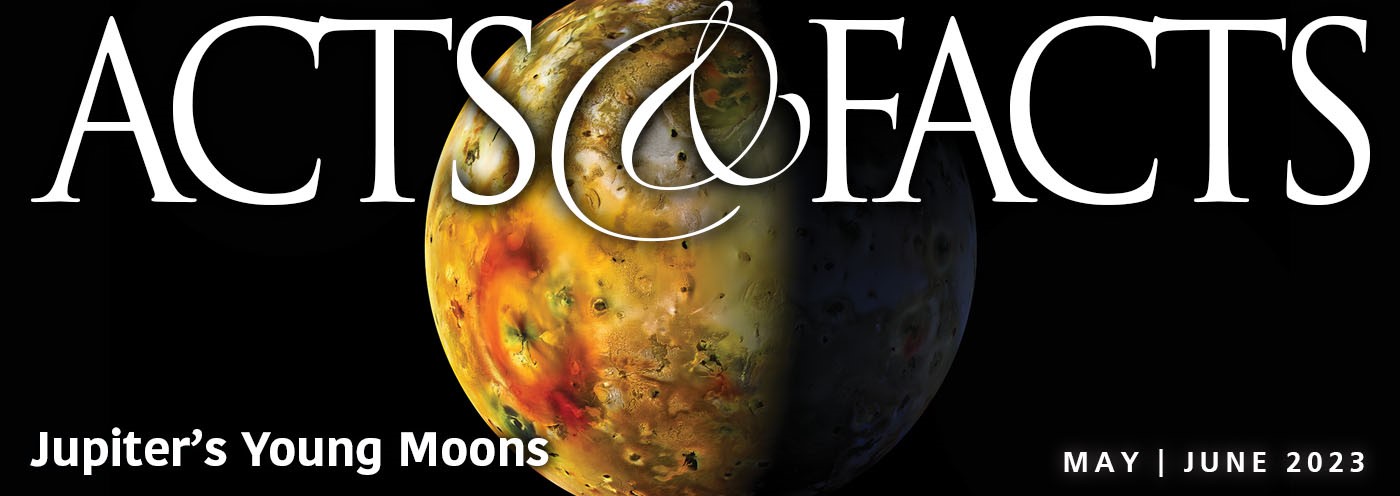by Jeffrey P. Tomkins, Ph.D., and Timothy Clarey, Ph.D.*
Perhaps the greatest problem for evolution is where and how the first biomolecules and cells originated by means of random processes.1 And if that problem wasn't substantial enough—essentially statistically and biologically impossible—a new discovery makes the odds even worse. Colonies of complex fossil microbes have recently been found that allegedly push the origin of life to at least 3.7 billion years into the past—a period of time thought to be unfavorable for life to begin.2
Fossils found by scientists in Greenland are now thought to be the oldest evidence of life yet discovered. The research team from the University of Wollongong just reported their stromatolite findings in the prestigious journal Nature. Stromatolites are biologically derived rocks formed by colonies of microbes that live in shallow marine waters. In fact, living photosynthesizing stromatolites can be readily observed today in the Bahamas and are thought to be the oldest living forms of life on earth.3-5
The original speculative origin of life for the first cell mystically popping into existence is thought to have happened about 3.5 billion years ago.2 However, this new discovery supposedly places the existence of complex photosynthesizing cyanobacteria about 220 million years older—putting the presence of complex microbes on the earth about 3.7 billion years ago. The problem is this was a time when our earth was thought to have been experiencing extremely harsh conditions unfavorable to the emergence of life and the thriving existence of complex photosynthesizing bacteria.
In light of this perplexing evolutionary dilemma, a science piece in the New York Times states that "the great age of the fossils complicates the task of reconstructing the evolution of life from the chemicals naturally present on the early Earth."6 The authors go on to more clearly state the crux of the problem, "It leaves comparatively little time for evolution to have occurred and puts the process close to a time when Earth was being bombarded by destructive asteroids."
So not only is the emergence of life from non-life via random naturalistic processes completely improbable to begin with, now, according to the evolutionist's own reckoning, there is also no adequate time period for it occur.
This begs the question as to whether it takes more faith to believe in evolution or the fact that an Omnipotent Creator is the source of all life. The Bible clearly states the situation when it says, "For since the creation of the world His invisible attributes are clearly seen, being understood by the things that are made, even His eternal power and Godhead, so that they are without excuse" (Romans 1:20).
References
- Tomkins, J. 2016. Life from an ‘RNA World'? Creation Science Update. Posted on ICR.org September 6, 2016, accessed September 18, 2016.
- Nutman, A. P., et al. 2016. Rapid emergence of life shown by discovery of 3,700-million-year-old microbial structures. Nature. 537 (7621): 535-538.
- Awramik, S. M., J. Sprinkle. 1999. Proterozoic stromatolites: the first marine evolutionary biota. Historical Biology. 13 (4): 241-253.
- Reid, R. P., et al. 1995. Modern marine stromatolites in the Exuma Cays, Bahamas: Uncommonly common. Facies. 33 (1): 1-17.
- Reid, R. P., et al. 2000. The role of microbes in accretion, lamination and early lithification of modern marine stromatolites. Nature. 406 (6799): 989-992.
- Wade, N. 2016. World's Oldest Fossils Found in Greenland. The New York Times. Posted on nytimes.com on August 31, 2016, accessed September 18, 2016.
*Dr. Tomkins is Director of Life Sciences at the Institute for Creation Research and earned his Ph.D. in genetics from Clemson University. Dr. Tim Clarey is Research Associate at the Institute for Creation Research and earned his Ph.D. in geology from Western Michigan University.
Article posted on September 29, 2016.















